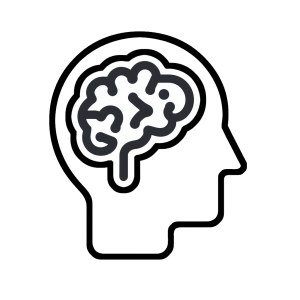Communication and Culture Basics
 Preparing to Learn
Preparing to Learn
Communication and Culture Basics
Before discussing collaboration theories and frameworks to use in special education, complete the assessment below to check what you already know, what you need to unlearn, and what you might be interested in exploring further.
Collaboration remains an important element of special education. Special education teachers must collaborate with parents, coordinators, administrators, and students to ensure support for students and their academic needs. To collaborate effectively, teachers must first know how to communicate effectively, as communication plays a vital role in collaboration. This chapter briefly introduces communication theories and frameworks that special education teachers can use to build healthy collaborations. The module’s next chapter explores collaboration practices for developing meaningful collaborative relationships.
Types of Communication
This section defines and explains two primary types of communication—interpersonal communication and intrapersonal communication—offering related theories to shed light on factors that can affect the success of a team’s collaborations.
Interpersonal Communication[1]
The term interpersonal communication refers to messages sent and received between two people. Most people’s daily lives involve interpersonal communication on some level. In his Fundamental Interpersonal Relations Orientations Theory, William Schutz proposed that interpersonal communication is important to human beings for three main reasons: control, inclusion, and affection (Schutz, 1960).
- Control (not to be confused with manipulation) is an individual’s ability to influence behaviors and ideas in others.
- Inclusion is an innate desire in humans to belong to a social group. At its most basic, inclusion implies safety, but it also indicates the value of the individual to the group and vice versa.
- Affection is an emotional state of fondness and positive regard toward a specific target (Floyd and Morman, 1998).
Notably, these categories also reflect culturally inclusive practices that many Diversity, Equity, and Inclusion (DEI) advocates view as key to effective learning environments and collaborations with communities; they simply use slightly different terminology.[2] Humans are wired to desire control (agency), inclusion (belonging), and affection (appreciation or respect). In addition, some institutions have expanded DEI to include Justice, Equity, Diversity, and Inclusion (JEDI).
When teachers collaborate with others to provide special education services to students, they also form relationships with them. Understanding these three key motivations underlying relationships—control, inclusion, and affection—can help teachers form more effective connections and, as a result, improve students’ outcomes.
Uncertainty Reduction Theory
When we meet new people, we are inherently fraught with uncertainty about the new relationship. Theorists Charles Berger and Richard Calabrese called this the Uncertainty Reduction Theory, which explains how humans typically approach the formation of a new relationship. As a response, we seek to reduce this uncertainty and its resulting anxiety by employing strategies such as the following.
- Passive strategies avoid disrupting the other individual and can be accomplished through observation.
- Active strategies involve asking a friend for information or observing social networking (for example, checking out a person’s social media presence).
- Interactive strategies involve direct contact with the other individual.
Berger and Calabrese found self-disclosure (an interactive strategy) as the best and most common way of reducing this uncertainty. Self-disclosure needs to be reciprocal to successfully reduce uncertainty. Through self-disclosure, people are able to gain more information about those around them, which allows for deeper insight into future actions, resulting in reduced uncertainty. However, self-disclosure also can make people vulnerable, as the person receiving the message may not reciprocate the sharing of information or choose to weaponize the information they learn in an effort to feel empowered. To engage in authentic, effective self-disclosure, everyone involved in the communications must experience a shared sense of trust.
With new introductions, three factors tend to determine what and how much people choose to self-disclose: the person’s ability to reward or punish us, the degree to which they meet or violate our social expectations, and our expectation that we will encounter them again.
Think about those three factors from the perspective of a parent who is new to special education and is joining an Individualized Education Program (IEP) team:
- A classroom teacher could retaliate against their child if there’s a conflict between them and the parent during an IEP meeting.
- An LEA representative appears to have very different cultural or religious values than the family, causing the parent to worry if sharing key values held by their child will cause the LEA to be less cooperative in providing resources.
- A first-grade student with an IEP in the development stage will likely work with the educators on the IEP team for many years.
Although the guardian and student roles in the IEP team are perhaps the most vulnerable because of their less formal relationship with the public school system, these dynamics also can impact two public school employees. Consider the following questions: Does the Local Education Agency (LEA) representative view flexibility as disorganization? Does the classroom teacher agree with an IEP goal because they do not want to contradict someone they see as an authority figure? How do cultural and personal histories affect IEP team dynamics?
 Critical Perspective
Critical Perspective
How Structural Racism in Special Education Could Affect Self-Disclosure
American public education has a long history of structural racism resulting in disparities in student outcomes, and this is no less true within special education. As you read the article below, consider how this factors into the risks of self-disclosure for diverse families navigating the special education system with their children. Would you trust your child’s school not to replicate discriminatory practices like those described in this story? How might you, as an educator, rethink your communication strategies to acknowledge the validity of concerns for students of color and their families?
Equity in IDEA: Why racial disparities are increasing in special ed programs
Intrapersonal Communication
Self-disclosure highly depends on how we view ourselves—our intrapersonal communication—an important asset to unpack and understand. Intrapersonal communication refers to communication phenomena that exist within or occur because of an individual’s self or mind (Wrench et al., 2021). In other words, intrapersonal communication is self-concept—what we think of ourselves, how we understand ourselves in the context of the world around us, and how we make choices about representing ourselves externally. Intrapersonal communication matters much more than you might think when developing effective relationships. Understanding our intrapersonal communications clearly can help us understand why we react in the ways we do in our interpersonal communications. Through that understanding, we can manage our relationships in ways that lead to maximum effectiveness.
Self-Discrepancy Theory[3]
According to self-discrepancy theory, people have beliefs about and expectations for their actual and potential selves that do not always match up with what they actually experience (Higgins, 1987). Self-concept develops from this theory. Understanding this theory requires understanding the different selves that comprise self-concept, which include the actual, ideal, and ought selves. The actual self consists of the attributes that you or someone else believe you actually possess. The ideal self consists of the attributes that you or someone else would like you to possess. The ought self consists of the attributes you or someone else believe you should possess.
These different selves can conflict with each other in various combinations.
As a result, self-discrepancies inform how we present ourselves to others. Self-presentation is the process of strategically concealing or revealing personal information to influence others’ perceptions (Human et al., 2012). We engage in this process daily and for different reasons. Although people occasionally deceive others intentionally during the process of self-presentation, people generally try to make a good impression while still remaining authentic. Since self-presentation helps people meet needs requiring interpersonal communication, we stand to lose quite a bit if we are caught intentionally misrepresenting ourselves.
This section covered the importance of building effective interpersonal relationships through effective intrapersonal communications. The next section will explore how our understanding of cultural and environmental factors in interpersonal communication can inform our choices about self-presentation and collaboration.
Culture and Environment
Central to who we are, our cultures and environments inform how we approach cooperation. Considering these factors in others can help you adjust your own behaviors within a team to encourage effective collaborations with other group members or at least understand the underlying motivations for the behaviors you encounter.
Ecological Systems Theory[4]
Urie Bronfenbrenner’s Ecological Systems Theory argues that the variety of environmental systems each person experiences influences human development. People behave differently depending on what systems are part of their current environment and how they learned to think and communicate within that system.
Bronfenbrenner developed the Ecological Systems Theory with the teacher/student relationship in mind. That relationship is, of course, central to an educator’s priorities when it comes to navigating the world of special education, but Ecological Systems Theory also can be applied to cultivating effective partnerships within an IEP team. Considering how these environmental systems inform team members’ interpersonal communication behaviors can help you choose the most effective approach when forming relationships and working together.
Hofstede’s Cultural Dimensions Theory[5]
Geert Hofstede developed the Cultural Dimensions Theory as part of his work on organizational cultures in business. He conducted a large survey (1967-1973) that examined value differences across the divisions of IBM, a multinational corporation. While researchers collected data from 117,000 employees from 50 countries across three regions, many scholars have questioned the validity of his resulting framework because the survey included only mostly male white-collar workers. But more importantly, they criticized it for a failure to take into account the dynamic nature of national cultures and the ways they could change over time.
Despite some problematic characterizations within these cultural dimensions (for example, succumbing to stereotypes about masculinity and femininity), these behavior preferences help in reflecting on others’ intrapersonal and interpersonal communication approaches. In fact, DEI scholars in education, such as Zaretta Hammond, have pointed to Hofstede’s Cultural Dimensions Theory as a useful starting point for bringing greater equity into K-12 learning environments.[6]
 Reflection
Reflection
Analyzing Communication Dynamics in IEP Teams
The brief, first-person narrative stories from parents below describe their relationships with other members of their child’s IEP team:
- With IEPs, Good People Can Disagree
- Why I feel invisible at IEP meetings (a dad’s view)
- How I’m making peace with my son’s IEP
- Beyond IEP meetings: How I connect with my son’s general education teachers
- The day I rejected my son’s IEP
Read at least one story, then consider the following questions:
- What kinds of interpersonal communication strategies appear in these stories?
- Where do you detect self-discrepancies that might be the root cause of potential conflict?
- What kinds of ecological systems or cultural dimensions might be coming into play in these stories?
Conclusion
Knowing more about interpersonal and intrapersonal communication, or the various ecological and cultural factors at play in our communications, may seem tangential to your role in providing special education services. Collaboration, though, is fundamental to supporting all students and is especially critical to successfully supporting students with disabilities. These frameworks equip future teachers with the skills to develop and maintain healthy relationships with every member of an IEP team. The next chapter explores specific collaborative strategies that prove effective in special education. In other words, this chapter explores the why, whereas the next chapter focuses on the what so that you have the tools to put this into practice as an educator.
References
Allen, R. (2020). Ensuring equity: Engaging families using culturally responsive practices. Keynote address for National Parent Center Capacity Building Conference, Center for Parent Information and Resources.
Buckley, D., and Budzyna, D. (2023). The whole child: Development in the early years. Licensed under a Creative Commons Attribution-NonCommercial-ShareAlike 4.0 International License.
Floyd, K., & Morman, M. T. (1998). The measurement of affectionate communication. Communication Quarterly, 46(2), 144-162.
Hammond, Z. (2015). Culturally responsive teaching & the brain: Promoting authentic engagement and rigor among culturally and linguistically diverse students. Corwin: Thousand Oaks, California.
Higgins, E. T. (1987). Self-discrepancy: A theory relating self and affect. Psychological Review 94(3), 320–21.
Human, L. J., Biesanz, J. C., Miller, G. E., Chen, E., Lekkas, D., & Seppala, E. (2012). Your best self helps reveal your true self: Positive self-presentation leads to more accurate personality impressions. Social Psychological and Personality Science, 3(1), 23
Primer on Communication Studies. (2012). Licensed under a CC BY-NC-SA 3.0 license.
Schutz, W. C. (1960). FIRO: A three dimensional theory of interpersonal behavior. Holt, Rinehart & Winston.
Worthy, L.D., Lavigne, T., and Romero, F. (2020.) Culture and psychology. Licensed under a Creative Commons Attribution-NonCommercial-ShareAlike 4.0 International License
Wrench, J.S., Punyanumt-Carter, N.M., and Thweatt, K.S. (2021). Interpersonal Communication. Licensed under a Creative Commons Attribution-NonCommercial-ShareAlike 4.0 International License.
- The following section is revised from Interpersonal Communication, by Jason S. Wrench; Narissra M. Punyanunt-Carter; and Katherine S. Thweatt, under a Creative Commons Attribution-NonCommercial-ShareAlike 4.0 International License. ↵
- See, for example, Allen, R. (2020). Ensuring equity: Engaging families using culturally responsive practices. Keynote address for National Parent Center Capacity Building Conference, Center for Parent Information and Resources. ↵
- This section revised from A Primer on Communication Studies (v. 1.0), licensed under a CC BY-NC-SA 3.0 license ↵
- Section revised from The Whole Child: Development in the Early Years ("Ecological Theory"), by Doris Buckley and Deirdre Budzyna, under a Creative Commons Attribution-NonCommercial-ShareAlike 4.0 International License. ↵
- Section revised from Worthy, L.D., Lavigne, T., and Romero, F. (2020.) Culture and Psychology. licensed under a Creative Commons Attribution-NonCommercial-ShareAlike 4.0 International License ↵
- Hammond focuses exclusively on Individualist/Collectivist traits in her groundbreaking book, Culturally Responsive Teaching & the Brain, but she expands on Hofstede's concept by adding one of her own: oral versus written traditions. Although Hammond's work is focused on creating equitable learning environments for students, it offers excellent insights for forming equitable partnerships with the communities that surround a student, such as an IEP team ↵
Messages sent and received between two people.
The tendency of human beings to eliminate unknown elements of individuals whom they have just met. Individuals wish to predict what another person thinks and how another person behaves. Strategies for reducing uncertainty include passive, active, and interactive.
is purposeful disclosure of personal information to another person.
A representative of the public agency who is qualified to provide, or supervise the provision of, specially designed instruction to meet the unique needs of children with disabilities; is knowledgeable about the general education curriculum; and is knowledgeable about the availability of resources of the public agency. This person is often a school or district administrator.
Communication phenomena that exist within or occurs because of an individual’s self or mind.
is self that consists of the attributes that you or someone else believes you actually possess.
is self that consists of the attributes that you or someone else would like you to possess.
is self that consists of the attributes you or someone else believes you should possess
The process of strategically concealing or revealing personal information in order to influence others’ perceptions.
posits that an individual’s development is influenced by a series of interconnected environmental systems, ranging from the immediate surroundings (e.g., family) to broad societal structures (e.g., culture).
